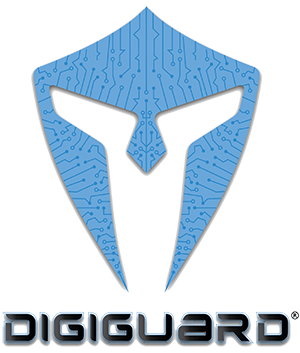Video Call Scams: How To Spot a Fake Video Call
Summary: This 3-minute article explains the new threat posed by video call scams using deepfake videos. Also, learn how to spot a fake video call. Cyber security requires multiple layers of defense and vigilant scrutiny of your computer system. Contact DIGIGUARD CYBER SECURITY at 833-33-CYBER (833-332-9237) or visit www.DIGIGUARDsecurity.com to schedule a cyber risk analysis and discuss a wide array of innovative solutions to ensure your SMB has the best possible small business cyber threat protection.
As technology evolves, unfortunately, so do cyber scams. Whenever we learn how to defend against one type of cyberattack, a new one begins to spread. The latest tool associated with online scamming is a video editing technique called deepfake video.
What Is a Deepfake Video?
Wikipedia https://en.wikipedia.org/wiki/Deepfake defines Deepfakes as “synthetic media” in which a person in an existing image or video is replaced with someone else's likeness. While creating fake content is not new, deepfakes leverage powerful techniques from machine learning and artificial intelligence to manipulate or generate visual and audio content that can more easily deceive.”
The FBI www.fbi.gov has issued warnings indicating increased reports of deepfake videos and stolen identification data. Also, there has been a sharp uptick in deepfake video call scams using doctored video and audio to apply for remote work, especially tech jobs. Scammers target corporate tech jobs to be in a position to access the company’s most sensitive data, such as customer databases, financial data and unique proprietary information.
How To Spot a Deepfake Video Call
Some deepfake video images can be very convincing. However, deepfake software requires many reference points on a human image to create a good fake. And the majority of those reference points are related to a full-frontal view of the facial image to be altered. So far, the artificial intelligence used for deepfakes has very few reference points to support an accurate 90-degree profile view. Asking someone on a video call to turn sideways should reveal the flaws in the imagery, thereby tipping off the viewer that the video is a deepfake scam.
However, deepfake video technology already has some future components that will be better able to capture profile reference points and create more convincing fake imagery. 3D video is already a reality and CGI (Computer Generated Imagery) could replace all previous technology with accurate imaging of entire heads. For cyber criminals, it’s only a matter of time.
Case Study
A deepfake video is not always needed to launch a deepfake scam. A few years ago, in Philadelphia, a deepfake attacker used an altered audio file to mimic the voice of a company’s chief financial officer. It was an effective fake, having been created by deepfake software and designed to recreate speech by mimicking the audio files of the CFO. Using an impersonation of the CFO, the cybercriminal authorized an emergency transfer of $300,000 to a sister company in Minneapolis. The fund transfer instructions from the fake actor directed the funds to an account in the Midwest. From there, the hacker re-directed the funds through a complicated network of transfers from city to city, making it hard to trace the origins of the original deepfake scammer. By the time the final transfer was found, the hacker had emptied the account and the $300,000 transfer was gone forever. Not many SMBs can survive a $300,000 theft, and after two years of investigations and countless legal fees, the company had to close its doors.
As computers and networks become faster, businesses must be aware of the dangers of moving too quickly when replying to emails, clicking on links and downloading files. The repercussions of a cyberattack and a serious data breach could stop the operation of your business and, at its worst, force your small to midsized company out of business.
DIGIGUARD’s Innovative Solutions For SMBs
As your SMB grows, expands its network and adds more platforms and devices, such as Bluetooth devices, smart controls and wireless remote, your network’s vulnerability grows, too. Protection against deepfake scams is just one layer of many security steps required to protect your computer system. DIGIGUARD specializes in proactive cyber threat protection and network security and has a wide array of solutions for small to midsized businesses to defend against cyberattacks and other network data breaches. They are cyber security experts who can ensure your confidential personal, business and financial data have the best protection possible. Furthermore, they can help establish cyber security best practices and provide employee training so your employees can spot cyber threats and not inadvertently expose your company to a cyberattack. That training will work in tandem with the rest of your cyber protections so that everyone knows what they must do to prevent a data breach and precisely what to do in the event of a real cyberattack. DIGIGUARD’s services in cyber security are up-to-the-minute and cost-effective. They will enable SMB owners to concentrate on operating their businesses without fear of a data breach crippling their operations.
Contact DIGIGUARD CYBER SECURITY at 833-332-CYBER (833-332-9237) www.DIGIGUARDsecurity.com to discuss the best cyber threat protection for your SMB before you face a deadly cyberattack.


